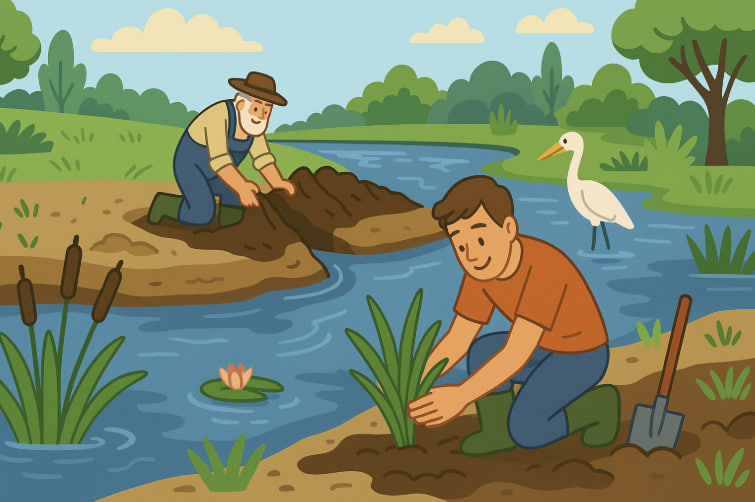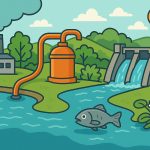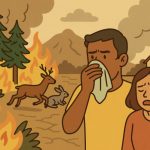Wetlands — including swamps, bogs, marshes, and peatlands — are among the most valuable ecosystems on Earth. They filter water, store carbon, protect against floods, and support rich biodiversity. Yet over the past century, more than 50% of the world’s wetlands have been drained or degraded for farming, construction, or peat extraction. Restoring them is not only possible — it’s essential for climate stability, water security, and the future of nature.
Why Wetlands Matter
Wetlands provide a wide range of ecosystem services:
- Water purification — Wetlands act as natural filters, removing pollutants, sediments, and nutrients from water
- Flood control — They absorb and slow down excess rainfall, reducing flood risk
- Carbon storage — Especially peatlands, which lock away vast amounts of carbon and methane
- Habitat — Home to thousands of species, including amphibians, fish, birds, and rare plants
- Climate regulation — Wetlands help cool the air and stabilize local weather
- Livelihoods — Many communities rely on wetlands for fishing, agriculture, and ecotourism
When destroyed, these functions are lost — and so are the benefits to people and the planet.
What Damages Wetlands?
- Draining for agriculture or infrastructure development
- Peat mining and excessive water extraction
- Pollution from fertilizers, sewage, or heavy metals
- Invasive species that displace native plants and animals
- Climate change, which alters water levels and increases fire risk
Once drained or polluted, wetlands often degrade quickly — but with the right efforts, they can be revived.
How to Restore Wetlands
Wetland restoration is a growing science that includes several proven techniques:
1. Rewetting and Water Management
- Block or fill drainage ditches
- Restore natural water flow by removing dams or barriers
- Raise water tables to match original wetland conditions
2. Replanting Native Vegetation
- Use local wetland plants to stabilize soil and revive ecosystems
- Remove invasive species (e.g., water hyacinth or reeds)
3. Peatland Protection
- Ban peat extraction and promote alternatives in gardening
- Keep peatlands waterlogged to avoid carbon release
4. Pollution Control
- Reduce fertilizer and pesticide use near wetlands
- Treat wastewater before it enters natural water bodies
5. Community Involvement
- Engage local people in restoration and protection
- Educate about the economic and ecological value of wetlands
Global Examples of Wetland Recovery
- The Danube Delta in Europe has seen wetland expansion through rewetting and buffer zones
- The Everglades in Florida are undergoing one of the world’s largest wetland restoration efforts
- Peatland projects in Indonesia, Congo, and Canada help reduce CO₂ emissions
These cases show that, with investment and care, nature can recover — and even thrive.
Glossary
- Wetlands — Water-saturated ecosystems like swamps, marshes, bogs, or peatlands
- Peatlands — Wetlands that accumulate thick layers of organic matter (peat), storing carbon
- Rewetting — Restoring natural water levels in drained wetlands
- Invasive species — Non-native organisms that damage the local ecosystem
- Ecosystem services — Benefits that nature provides to people, like clean water or climate regulation


